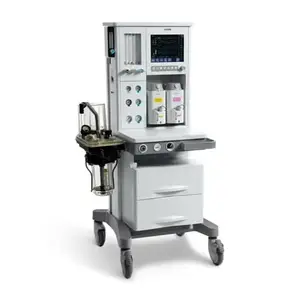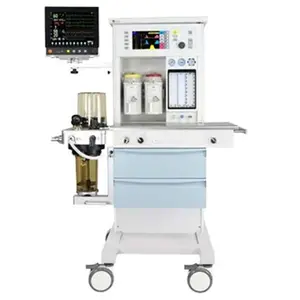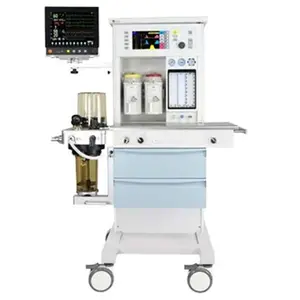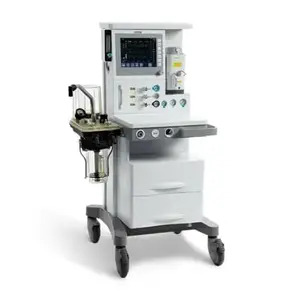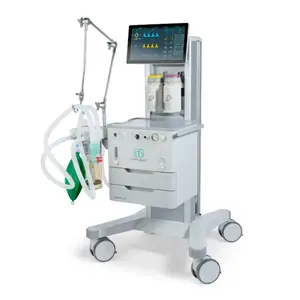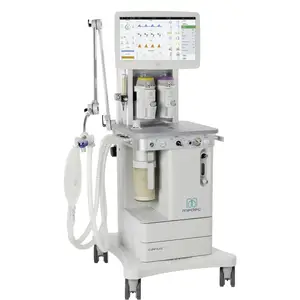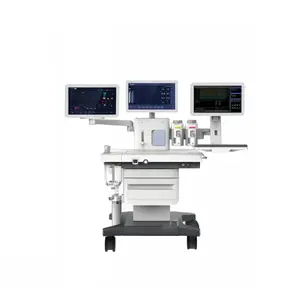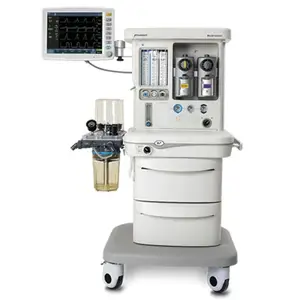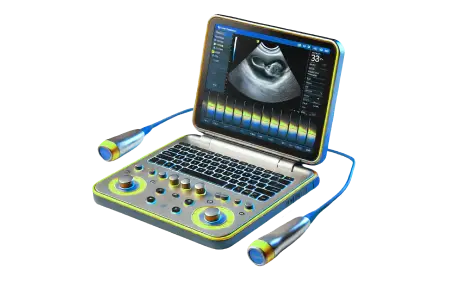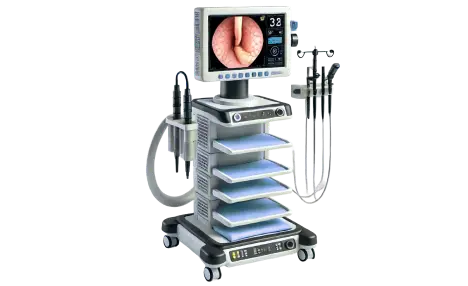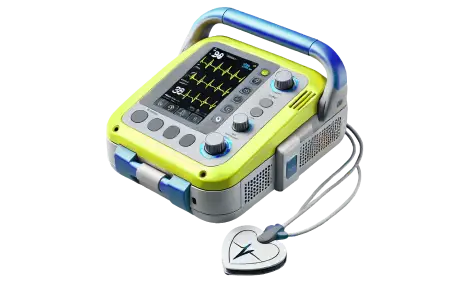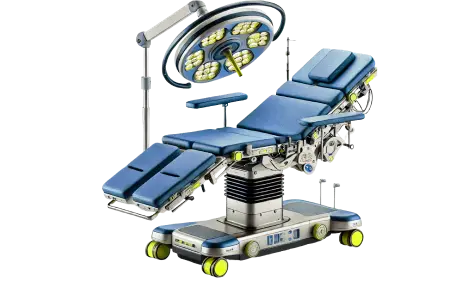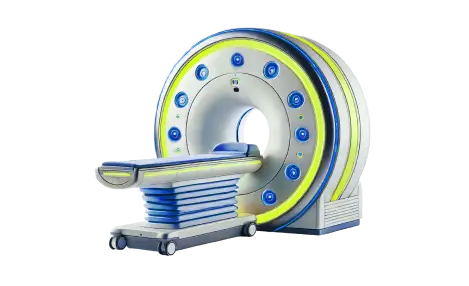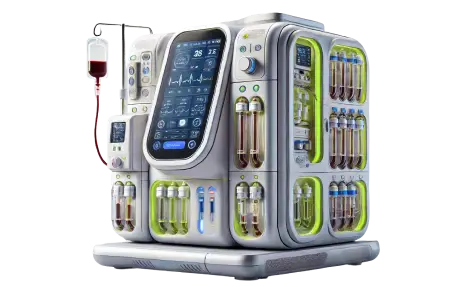0 800 33 09 39Information service
Anesthesiological devices
20 productsAnesthesia machine: purpose, functions and types
An anesthesia machine is a sophisticated medical device designed to deliver precise mixtures of anesthetic gases to patients during surgery while monitoring vital parameters.
An anesthesia machine plays an important role in ensuring breathing and maintaining patients' vital functions. An anesthesia machine controls gas flow, manages airway pressure, monitors oxygen saturation, and allows for immediate adjustment of anesthesia depth and ventilation parameters during surgical procedures.
Depending on the design and purpose, there are three main types of anesthesia machines
An anesthesia machine plays an important role in ensuring breathing and maintaining patients' vital functions. An anesthesia machine controls gas flow, manages airway pressure, monitors oxygen saturation, and allows for immediate adjustment of anesthesia depth and ventilation parameters during surgical procedures.
Depending on the design and purpose, there are three main types of anesthesia machines
- static stations for large operating rooms with full monitoring capabilities and a large gas supply;
- mobile systems that can be easily transported between different surgical areas while maintaining full functionality;
- compact devices designed for small procedures or outpatient settings.
Each anesthesia machine is equipped with basic safety features, including multiple alarm systems and redundant power supplies to ensure patient safety during anesthesia.
Main functions and capabilities of anesthesia machines
The anesthesia station is suitable not only for intravenous anesthesia, but also for inhalation anesthesia. The anesthesia device accurately doses anesthetics to put the patient into a safe and quick medication sleep.
An integrated ventilation system allows anesthesiologists to control respiratory parameters, including volume, pressure, respiratory rate, and CO2, adapting them to the specific needs of each patient during surgery.
Modern anesthesia machines include comprehensive monitoring capabilities that continuously track vital signs such as blood pressure, heart rate, oxygen saturation, body temperature, and inhaled gas concentrations in the blood in real time.
To ensure patient safety, anesthesia machines are equipped with redundant alarm systems that immediately notify medical personnel of any deviations from the set parameters. The anesthesia machine also has backup power supplies and mechanical ventilation capabilities that are activated in the event of a system failure or power outage.
Types of anesthesia devices by purpose
- General anesthesia devices designed for complex surgeries in adult patients that have advanced ventilation modes, multiple anesthetic delivery options, and extensive monitoring capabilities for long-term procedures.
- Pediatric anesthesia devices are specially calibrated to meet the physiological needs of children. They are designed to provide painless, safe anesthesia administration by delivering a mixture of anesthetics through an inhaler, and also provide monitoring of vital signs. Anesthesia machines often have special settings and functions adapted to the needs of children, including newborns.
- Mobile anesthesia stations provide the flexibility to be used in different hospital settings or in the field while maintaining basic functions, while stationary models offer advanced features including additional gas ports, larger displays, and integration with hospital monitoring systems.
- ICU an esthesia machines include innovative features such as automated drug delivery systems, advanced respiratory monitoring, integrated connectivity to electronic health records, and sophisticated alarm management systems to support complex resuscitation scenarios.
Key criteria for choosing an anesthesia machine
When choosing an anesthesia machine, it is necessary to carefully evaluate the key technical characteristics of the operating equipment, including ventilation modes
(VCV, PCV, SIMV-PC, SIMV-VC, PSV, PRVC, HLM), gas delivery accuracy, monitoring capabilities, and the range of compatible anesthetics.
(VCV, PCV, SIMV-PC, SIMV-VC, PSV, PRVC, HLM), gas delivery accuracy, monitoring capabilities, and the range of compatible anesthetics.
The quality of components is important for patient safety, with special attention being paid to the durability of ventilator components, the accuracy of flow meters, the reliability of electronic systems, and the quality of backup power systems.
You should also consider the ability of the anesthesia machine to integrate with existing hospital systems using standard protocols, compatibility with various breathing circuits and monitoring devices, and the availability of software updates for future expansion opportunities.
Of course, the manufacturer's reputation, certification standards (FDA and CE), and warranty terms are crucial factors that indicate long-term reliability and access to service support.
Of course, the manufacturer's reputation, certification standards (FDA and CE), and warranty terms are crucial factors that indicate long-term reliability and access to service support.
Where to buy an anesthesia station in Ukraine?
The MediGo store offers to buy anesthesia machines from leading manufacturers. The price of an anesthesia station depends on the material and technologies used in its manufacture, functionality, and brand. We provide professional advice and guarantee reliable after-sales support, including equipment installation and staff training. On our website you can find different models of anesthesia machines, detailed descriptions and photos. After placing an order, our manager will check the availability of the goods and inform you when it can be received in a convenient way: by courier, Nova Poshta, or pickup.
FAQ
Are anesthesia devices suitable for pediatric patients?
Modern anesthesia devices have pediatric modes and special settings. For example, the Caelus Lite anesthesia system is universal and is used for adults, children, and newborns.
What are the most popular brands of anesthesia devices?
The most well-known and reliable brands include Dräger, Caelus, Eluna, and Cenar. These manufacturers are known for their reliability, advanced features, and service support.


